-
In Litigation Over Holocaust Victim’s Lost Schiele Artwork, Second Circuit’s Reversal Keeps Claims Alive
04/04/2025
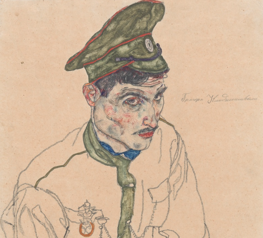 The Second Circuit Court of Appeals has weighed in on a dispute between the Art Institute of Chicago and the heirs of a Holocaust victim, over an artwork by famed Expressionist artist Egon Schiele.
The Second Circuit Court of Appeals has weighed in on a dispute between the Art Institute of Chicago and the heirs of a Holocaust victim, over an artwork by famed Expressionist artist Egon Schiele.
-
Two New Lawsuits Filed Against Major Museums
Over Works Lost During Nazi-Era Persecution01/30/2023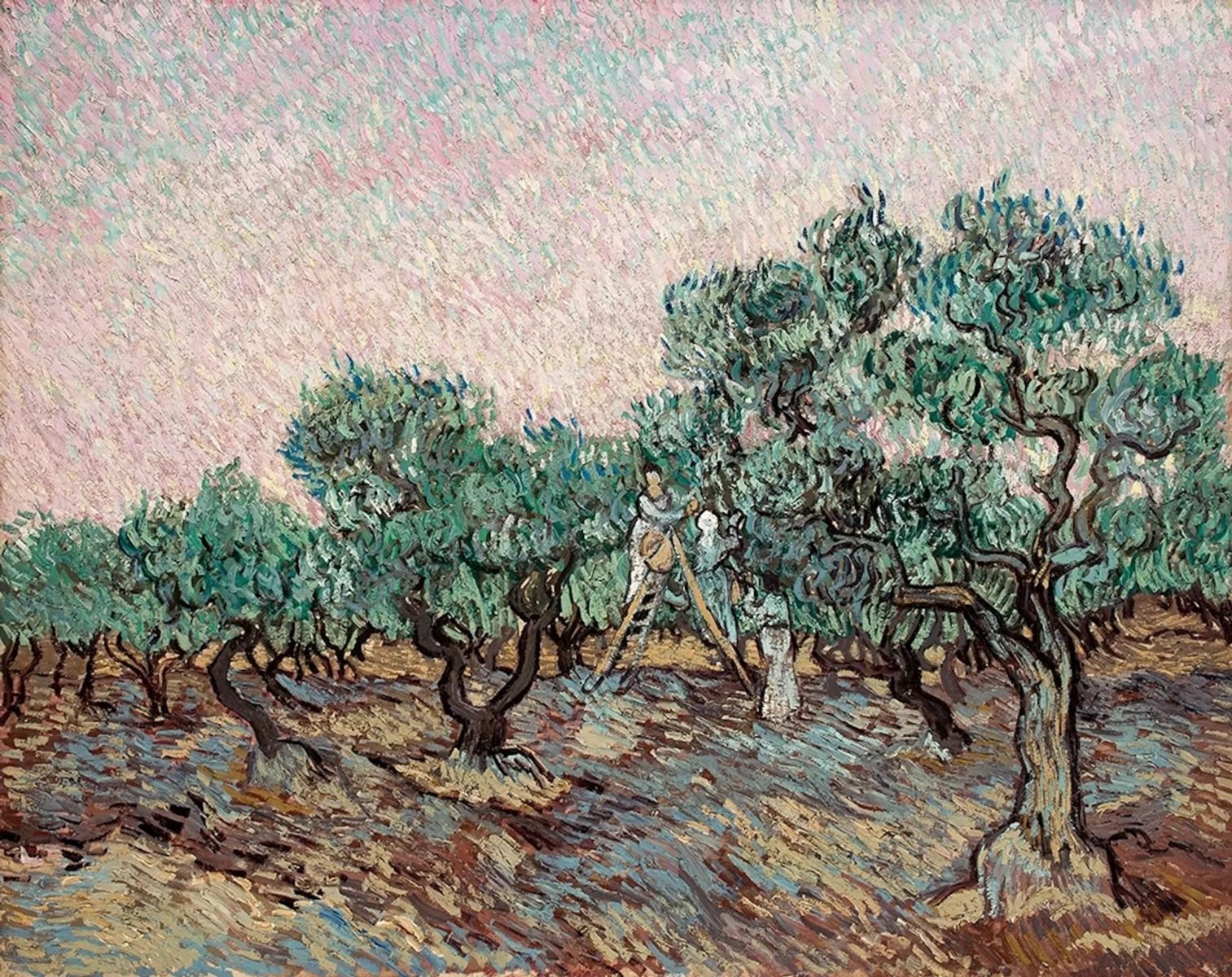 In recent weeks, the families of two different victims of Nazi persecution have filed suit in federal court, each suing a major museum over artwork taken from their ancestors during the Nazi era. These cases continue to raise complex legal questions about the painful legacy of a brutal regime and its massive displacement of art throughout Europe during the years before, during, and after World War II.
In recent weeks, the families of two different victims of Nazi persecution have filed suit in federal court, each suing a major museum over artwork taken from their ancestors during the Nazi era. These cases continue to raise complex legal questions about the painful legacy of a brutal regime and its massive displacement of art throughout Europe during the years before, during, and after World War II.
-
Another Epilogue In the Long Saga Of A Looted Pissarro Painting
06/09/2021
 The long-running dispute over a Pissarro painting has come to a close—yet again—after years of legal wrangling in multiple forums, and after a complex settlement arrangement collapsed in spectacular fashion. As is sadly the case in many stories involving Nazi-era art litigation, there is no dispute that the artwork at issue here was outright looted by Nazi forces in Nazi-occupied France, yet the artwork will not return to the family from whom it was wrested.
The long-running dispute over a Pissarro painting has come to a close—yet again—after years of legal wrangling in multiple forums, and after a complex settlement arrangement collapsed in spectacular fashion. As is sadly the case in many stories involving Nazi-era art litigation, there is no dispute that the artwork at issue here was outright looted by Nazi forces in Nazi-occupied France, yet the artwork will not return to the family from whom it was wrested.
-
Supreme Court Rules Against Jewish Art Dealers’ Heirs In Suit To Recover the “Guelph Treasure,” Allegedly the Subject of a Nazi-Era Forced Sale
02/15/2021
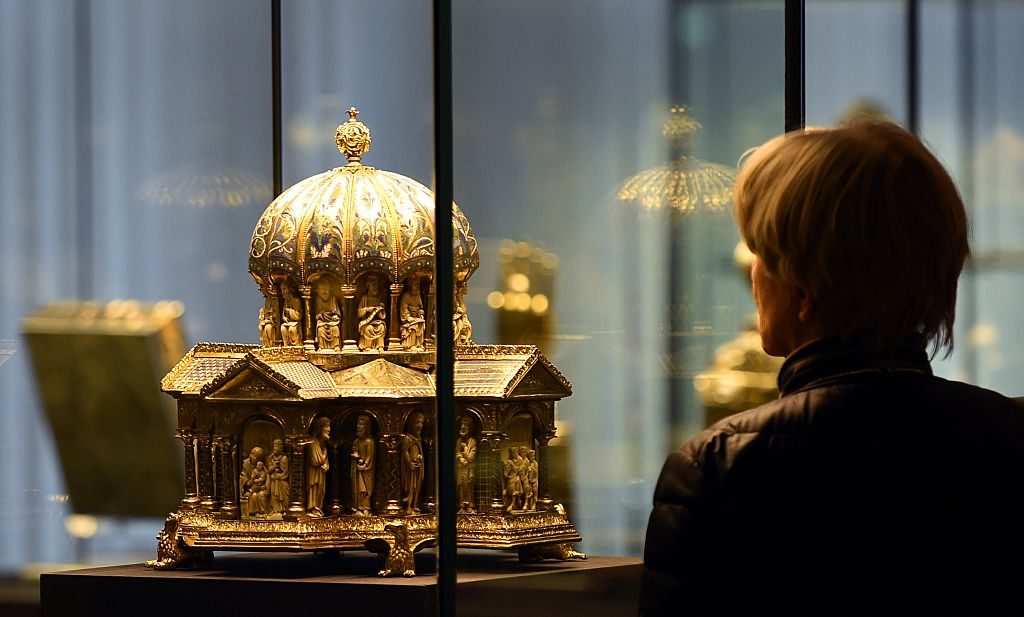 Just a few weeks ago, we wrote about some of the Supreme Court’s most significant art-related cases from 2020, and noted that we were awaiting the Court’s decision in a long-running dispute over the so-called Guelph Treasure. In early February, the Court issued its ruling, dealing the plaintiffs, who are the heirs of a consortium of Jewish art dealers, a major blow in their attempt to seek redress for their ancestors’ loss.
Just a few weeks ago, we wrote about some of the Supreme Court’s most significant art-related cases from 2020, and noted that we were awaiting the Court’s decision in a long-running dispute over the so-called Guelph Treasure. In early February, the Court issued its ruling, dealing the plaintiffs, who are the heirs of a consortium of Jewish art dealers, a major blow in their attempt to seek redress for their ancestors’ loss.
-
As A New Year Begins, A Look Back At Some of the Supreme Court’s Important Art-Related Rulings, Non-Rulings, and Pending Cases from 2020
01/14/2021
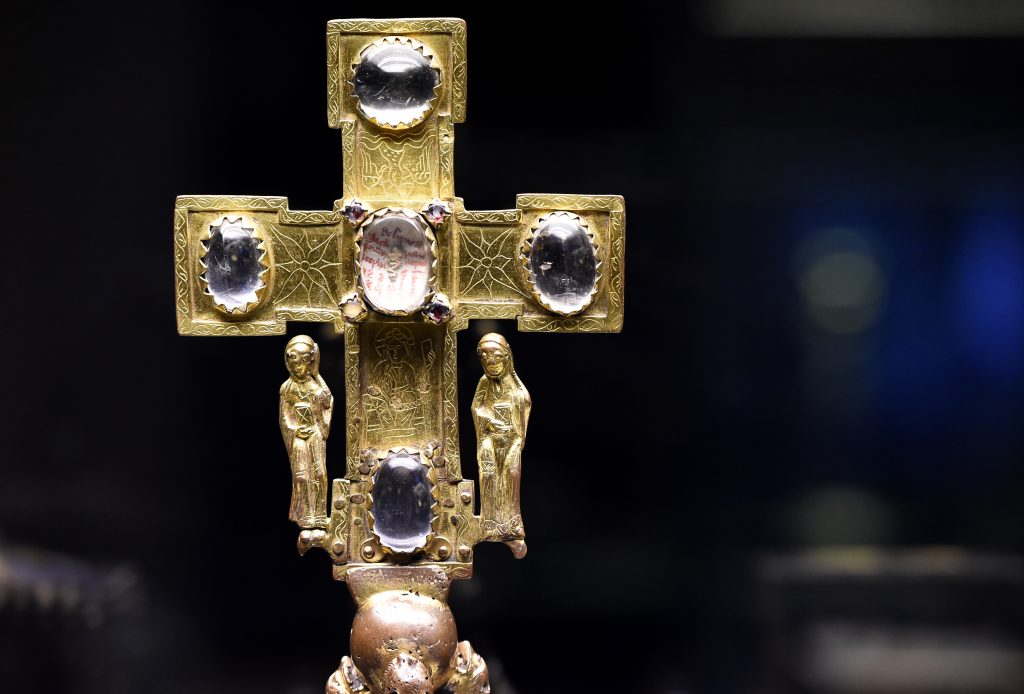 As we leave 2020 behind, we’ve put together a brief update on some of the Supreme Court’s most significant 2020 decisions that have implications for the art world, as well as a couple of cases that have been argued but not yet decided.
As we leave 2020 behind, we’ve put together a brief update on some of the Supreme Court’s most significant 2020 decisions that have implications for the art world, as well as a couple of cases that have been argued but not yet decided.
-
Citing Delay, Second Circuit Affirms That Met Can Keep Picasso
Purportedly Sold Under Duress During World War II;
Meanwhile, New York Appellate Court Affirms
That Two Schiele Works Should Go Back To Holocaust Victim’s Family
07/15/2019
A three-judge panel for the Second Circuit Court of Appeals has agreed with the lower court’s decision that the Metropolitan Museum of Art may keep a “rose period” Picasso painting despite claims that it was sold by a German-Jewish family to escape Nazi persecution in Italy during World War II. See Zuckerman v. The Metropolitan Museum of Art, Case No. 18‐634, -- F.3d – (2d Cir., June 26, 2019).
-
German Cathedral Surrenders Nazi-Looted Artwork To Heirs of Jewish Owners; Meanwhile, A Separate Art Recovery Suit Ends in Defeat, Illustrating Continuing Challenges in Nazi-Era Restitution Litigation
03/28/2019
Last week, a cathedral in Germany agreed to turn over a valuable painting to the heirs of the family from whom it was stolen during World War II. The case marks another example of the type of negotiated restitution that has become an important factor in art disputes in recent years, but stands in stark contrast to another dispute that ended in defeat a few months ago for the heirs of a Jewish art dealer who fled Germany in the years leading up to World War II.
ATTORNEY: Kate Lucas
CATEGORIES : Art Market, Fine Art, Legal Developments, Nazi-looted Art, Uncategorized -
Ninth Circuit Rules Against Heiress of Nazi-Looted Work, Which Will Remain in Possession of California's Norton Simon Museum
08/02/2018
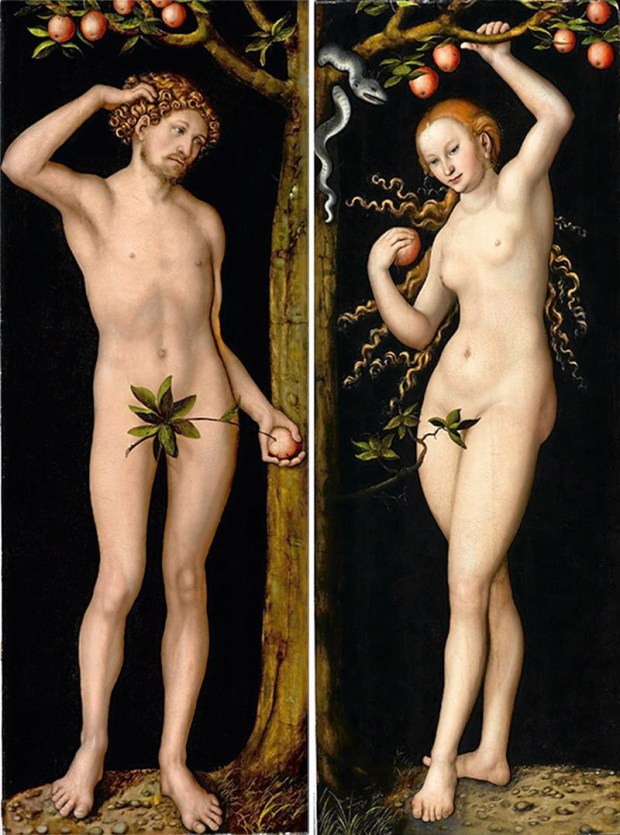 Earlier this week, the Ninth Circuit Court of Appeals issued the latest—and likely final—ruling in Marei von Saher’s decades-long attempt to recover artwork looted by the Nazis from her late father-in-law. In ruling against von Saher, the Ninth Circuit has ensured that the Cranachs will remain in the museum, and accessible to the public, for the foreseeable future. This ruling will have significant implications for heirs of those who originally owned Nazi-looted artworks, especially where such heirs have already tried and failed to recover artwork through the official restitution channels instituted by European governments in the post-war years.
Earlier this week, the Ninth Circuit Court of Appeals issued the latest—and likely final—ruling in Marei von Saher’s decades-long attempt to recover artwork looted by the Nazis from her late father-in-law. In ruling against von Saher, the Ninth Circuit has ensured that the Cranachs will remain in the museum, and accessible to the public, for the foreseeable future. This ruling will have significant implications for heirs of those who originally owned Nazi-looted artworks, especially where such heirs have already tried and failed to recover artwork through the official restitution channels instituted by European governments in the post-war years.
-
Dealer Looks to Christie’s For Reimbursement After Learning That Work Sold in 2008 Auction Was Nazi Loot
06/08/2018
We continue to follow the ongoing conversation in the art world about how best to handle disputes over artwork that was looted or displaced during the chaos and persecution of World War II. As one recent story demonstrates, sometimes a current possessor demonstrates willingness to return a work to rightful claimants but looks to a third party for compensation for the loss.
ATTORNEY: Kate Lucas
CATEGORIES : Art Market, Fine Art, Legal Developments, Nazi-looted Art, Provenance, Uncategorized -
Claims Over Long-Lost Modigliani Will Proceed
05/18/2018
We’ve written before about a high-profile case involving a Modigliani work, Seated Man with a Cane, which was allegedly taken from Oscar Stettiner, a Jewish art dealer who fled Paris in 1939 as the Nazis took over the city. Last week, a New York state court judge permitted a representative of his estate to proceed with claims against the work’s current possessors.
-
Descendants of Holocaust Victim Prevail In Suit to Recover Two Schiele Artworks
04/13/2018
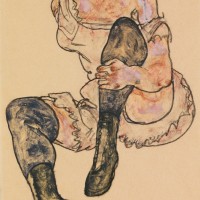 The descendants of Austrian-Jewish cabaret performer Fritz Grunbaum have been working for years to recover some of the art that Grunbaum owned in the years before the Nazis rose to power. Now, the Grunbaum heirs have achieved a new victory.
The descendants of Austrian-Jewish cabaret performer Fritz Grunbaum have been working for years to recover some of the art that Grunbaum owned in the years before the Nazis rose to power. Now, the Grunbaum heirs have achieved a new victory.
-
Federal Court Rules That Met Can Keep Picasso Sold As Owners Fled Pre-World War II Europe
02/09/2018
In a lengthy opinion issued earlier this week, Judge Loretta A. Preska of the U.S. District Court for the Southern District of New York ruled that the Metropolitan Museum of Art may keep a noteworthy Picasso artwork, even though its German-Jewish former owners sold it for a fraction of its actual value to finance their safe passage out of fascist Italy.
CATEGORIES : Art Exhibitions, Fine Art, Legal Developments, Museums, Nazi-looted Art, Provenance, Uncategorized -
Appeals Court Revives Case In Dispute Over Nazi-Looted Pissarro Work
07/25/2017
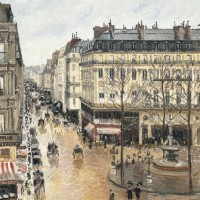 In our ongoing coverage of case law involving Nazi-looted artworks, we have written before about the long-running lawsuit over a Pissarro painting, Rue St. Honore, après midi, effet de pluie. Back in 2015, we wrote about a district-court decision that dealt a possibly-fatal blow to the claimants, who were seeking to recover the work from a collection controlled by the Spanish government. Earlier in July, however, the Ninth Circuit Court of Appeals reversed that decision, meaning the painting’s claimants can continue their fight in the federal courts.
ATTORNEY: Kate Lucas
In our ongoing coverage of case law involving Nazi-looted artworks, we have written before about the long-running lawsuit over a Pissarro painting, Rue St. Honore, après midi, effet de pluie. Back in 2015, we wrote about a district-court decision that dealt a possibly-fatal blow to the claimants, who were seeking to recover the work from a collection controlled by the Spanish government. Earlier in July, however, the Ninth Circuit Court of Appeals reversed that decision, meaning the painting’s claimants can continue their fight in the federal courts.
ATTORNEY: Kate Lucas
CATEGORIES : Fine Art, Legal Developments, Museums, Nazi-looted Art, Provenance -
Trend Toward Voluntary Restitution of Allegedly Looted Artworks Continues
03/09/2017
 While we often write about high-profile litigation over Nazi-looted artworks, it’s worth noting that in recent months, there have been a number of important examples of voluntary restitution, as parties increasingly seek to resolve such disputes outside the courtroom. In January, a German food company, Dr. Oetker, took steps to return four artworks from its corporate art collection whose provenances had been traced to victims of the Nazi regime.
While we often write about high-profile litigation over Nazi-looted artworks, it’s worth noting that in recent months, there have been a number of important examples of voluntary restitution, as parties increasingly seek to resolve such disputes outside the courtroom. In January, a German food company, Dr. Oetker, took steps to return four artworks from its corporate art collection whose provenances had been traced to victims of the Nazi regime.
-
Recently Enacted Federal Law Hopes to Facilitate Art Lending from Abroad
01/26/2017
 Under a recently enacted federal law, foreign states have been granted sovereign immunity in controversies over the temporary exhibition of artworks and cultural objects on loan to the United States, The Foreign Cultural Exchange Jurisdictional Immunity Clarification Act, signed at the end of last year by President Obama, grants immunity from federal or state-court jurisdiction to foreign governments, where an artwork or cultural object from that country has been imported for a temporary display at a U.S. cultural or educational institution.
Under a recently enacted federal law, foreign states have been granted sovereign immunity in controversies over the temporary exhibition of artworks and cultural objects on loan to the United States, The Foreign Cultural Exchange Jurisdictional Immunity Clarification Act, signed at the end of last year by President Obama, grants immunity from federal or state-court jurisdiction to foreign governments, where an artwork or cultural object from that country has been imported for a temporary display at a U.S. cultural or educational institution.
-
New Lawsuit Filed Against Bavarian State Over Allegedly Nazi-Looted Artworks
12/16/2016
 The heirs of a prominent Jewish art dealer have sued the Bavarian state over a group of eight valuable paintings that were allegedly looted when the dealer fled Nazi Germany. See Docket No. 16-09360 (S.D.N.Y.). The filing likely marks the start of another complex litigation against a sovereign state over artwork clouded by actions taken during the Nazi era.
The heirs of a prominent Jewish art dealer have sued the Bavarian state over a group of eight valuable paintings that were allegedly looted when the dealer fled Nazi Germany. See Docket No. 16-09360 (S.D.N.Y.). The filing likely marks the start of another complex litigation against a sovereign state over artwork clouded by actions taken during the Nazi era.
-
The Met Faces Litigation Regarding Nazi-Era Art
10/05/2016
 Litigation involving art displaced during World War II—and with it the continued focus on the need for adequate pre-acquisition due diligence—is in the news again with the recent filing of complaint against the Metropolitan Museum of Art regarding Pablo Picasso’s The Actor. See Estate of Leffman v. The Metropolitan Museum of Art, 16-cv-7665 (S.D.N.Y.)
Litigation involving art displaced during World War II—and with it the continued focus on the need for adequate pre-acquisition due diligence—is in the news again with the recent filing of complaint against the Metropolitan Museum of Art regarding Pablo Picasso’s The Actor. See Estate of Leffman v. The Metropolitan Museum of Art, 16-cv-7665 (S.D.N.Y.)
-
New Lawsuit Again Highlights the Need for Adequate Pre-Sale Diligence
09/09/2016
 The spotlight once again is focused on questions concerning the appropriate level of pre-sale diligence in art transactions, this time with allegations against the National Gallery in London. On Tuesday, the heirs of Margarete “Greta” Moll brought suit against The National Gallery of Art seeking to recover a painting by Henri Matisse, Portrait of Greta Moll, allegedly lost in the aftermath of World War II. Williams v. The National Gallery of Art, London, et al., Case No. 16-cv-06978.
The spotlight once again is focused on questions concerning the appropriate level of pre-sale diligence in art transactions, this time with allegations against the National Gallery in London. On Tuesday, the heirs of Margarete “Greta” Moll brought suit against The National Gallery of Art seeking to recover a painting by Henri Matisse, Portrait of Greta Moll, allegedly lost in the aftermath of World War II. Williams v. The National Gallery of Art, London, et al., Case No. 16-cv-06978.
-
Victory For the Norman Simon Museum In Latest Chapter of Dispute Over Nazi-Confiscated Cranach Diptych
08/24/2016
 We have written before about a long-running legal battle between the Norton Simon Museum in Pasadena, California, and the heir to a Jewish Dutch art dealer who fled the Netherlands in 1940. The focus of the dispute is a diptych (two painted panels) titled Adam and Eve, painted around 1530 by German Renaissance artist Lucas Cranach the Elder. A recent district court decision dealt a possibly fatal blow to the claims by plaintiff Marei Von Saher, although she plans to appeal.
We have written before about a long-running legal battle between the Norton Simon Museum in Pasadena, California, and the heir to a Jewish Dutch art dealer who fled the Netherlands in 1940. The focus of the dispute is a diptych (two painted panels) titled Adam and Eve, painted around 1530 by German Renaissance artist Lucas Cranach the Elder. A recent district court decision dealt a possibly fatal blow to the claims by plaintiff Marei Von Saher, although she plans to appeal.
-
The Struggle Continues: Recent Developments in Nazi-Era Art Restitution
07/25/2016
 This summer has brought several stories about the continuing and complex efforts to address the painful impact of Nazi Germany and World War II on the world’s cultural heritage and the global art market.
This summer has brought several stories about the continuing and complex efforts to address the painful impact of Nazi Germany and World War II on the world’s cultural heritage and the global art market.
-
University of Oklahoma Reaches Settlement With Claimant Over Nazi-Confiscated Pissarro Painting
04/01/2016
 After a long legal battle in multiple federal courts, the University of Oklahoma has reached a settlement regarding a claimant’s attempts to recover a Nazi-looted artwork by celebrated Expressionist painter Camille Pissarro.
After a long legal battle in multiple federal courts, the University of Oklahoma has reached a settlement regarding a claimant’s attempts to recover a Nazi-looted artwork by celebrated Expressionist painter Camille Pissarro.
We have previously written about this case, which involves a claim by 75-year-old Leone Meyer, who says that the painting, La Bergère Rentrent des Moutons (“Shepherdess Bringing in Sheep”), was stolen from her family by the Nazi regime during World War II.ATTORNEY: Kate Lucas
CATEGORIES : Fine Art, Legal Developments, Museums, Nazi-looted Art, Provenance -
In New Lawsuit, Heirs of Dachau Victim Seek Return of Two Schiele Works
12/09/2015
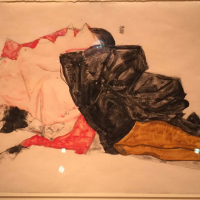 Around this time last year, our blog wrote about the history of two works by Austrian Expressionist Egon Schiele. Both were once owned by Fritz Grünbaum, a Jewish Austrian cabaret performer and art collector who was imprisoned by the Nazis in 1938 and died in Dachau in 1941; it’s unclear what happened to his art during and immediately after World War II, but a handful of the works have surfaced over the years since, sometimes leading to competing claims of ownership.
ATTORNEY: Kate Lucas
Around this time last year, our blog wrote about the history of two works by Austrian Expressionist Egon Schiele. Both were once owned by Fritz Grünbaum, a Jewish Austrian cabaret performer and art collector who was imprisoned by the Nazis in 1938 and died in Dachau in 1941; it’s unclear what happened to his art during and immediately after World War II, but a handful of the works have surfaced over the years since, sometimes leading to competing claims of ownership.
ATTORNEY: Kate Lucas
CATEGORIES : Art Market, Fine Art, Legal Developments, Nazi-looted Art, Provenance -
Controversy Over Jewish Archives Continues, As Court Enters $43.7 Million Interim Judgment Against Russia
09/28/2015Back in 2013, this blog discussed the ongoing litigation—and resulting international controversy—over a famous collection of religious books and manuscripts related to the heritage of Chabad-Lubovitch, a Hasidic Jewish organization founded in Russia and now based in New York. The Russian government, who has control of the collection, has refused to participate in the litigation. This month, the matter took on new weight as a federal court granted the Chabad-Lubovitch claimants’ request for an interim judgment against the Russian government—to the tune of over $40 million.
-
District Court Rules Against Claimants To a Pissarro Work Looted By Nazis
07/06/2015
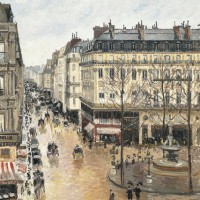 This blog has covered many recent stories involving Nazi-looted artworks. In early June, the U.S. District Court for the Central District of California ruled on the choice of law to be applied to one such dispute, and in the process dealt a blow to the claimants who were seeking the return of a long-lost artwork. The case highlights the difficulty of litigating these disputes that not only span decades of time, but also cross borders, jurisdictions, and legal regimes.
This blog has covered many recent stories involving Nazi-looted artworks. In early June, the U.S. District Court for the Central District of California ruled on the choice of law to be applied to one such dispute, and in the process dealt a blow to the claimants who were seeking the return of a long-lost artwork. The case highlights the difficulty of litigating these disputes that not only span decades of time, but also cross borders, jurisdictions, and legal regimes.
-
One of the First Restituted Works from Gurlitt Collection to be Sold
05/29/2015
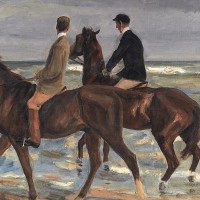 This blog has previously covered the twisting tale of the Gurlitt Collection, a cache of hundreds of artworks discovered in Germany and Austria a few years ago in the possession of Cornelius Gurlitt, the son of an art dealer authorized by the Nazis to deal in art confiscated, looted, or deemed “degenerate art” by Hitler’s regime. The art world has fiercely debated the best way to handle the collection, a daunting task that was further complicated when Gurlitt himself died last May and bequeathed his entire estate to the Kunstmuseum Bern in Switzerland.
This blog has previously covered the twisting tale of the Gurlitt Collection, a cache of hundreds of artworks discovered in Germany and Austria a few years ago in the possession of Cornelius Gurlitt, the son of an art dealer authorized by the Nazis to deal in art confiscated, looted, or deemed “degenerate art” by Hitler’s regime. The art world has fiercely debated the best way to handle the collection, a daunting task that was further complicated when Gurlitt himself died last May and bequeathed his entire estate to the Kunstmuseum Bern in Switzerland.
-
Suit Over Nazi-Confiscated Pissarro Painting Heads from New York to Oklahoma, As Oklahoma Legislators Put Pressure on University
05/27/2015
 Recent months have seen interesting developments in a federal lawsuit against the University of Oklahoma to recover an allegedly Nazi-looted painting by famed Expressionist Camille Pissarro. 75-year-old Leone Meyer claims that Nazis stole the painting, Pissarro’s “La Bergère Rentrent des Moutons” (“Shepherdess Bringing in Sheep”), from her family during World War II. The Jewish family owned a significant stake in Galeries Lafayette (a high-end Paris department store) and had an extensive art collection.
Recent months have seen interesting developments in a federal lawsuit against the University of Oklahoma to recover an allegedly Nazi-looted painting by famed Expressionist Camille Pissarro. 75-year-old Leone Meyer claims that Nazis stole the painting, Pissarro’s “La Bergère Rentrent des Moutons” (“Shepherdess Bringing in Sheep”), from her family during World War II. The Jewish family owned a significant stake in Galeries Lafayette (a high-end Paris department store) and had an extensive art collection.
-
Gurlitt’s Bequest to Kunstmuseum Bern Upheld; Ongoing Task of Handling Restitution Claims Remains
04/07/2015
 This blog, along with the rest of the art world, has followed the twists and turns in the strange story of the Gurlitt Collection, a staggering trove of well over 1,000 artworks amassed by German art dealer Hildebrand Gurlitt during the Nazi era. Our earlier posts review the matter in more detail, but in short, Gurlitt was one of only a few dealers authorized by Nazi leaders to trade in what the Nazis called “degenerate” works of art confiscated or looted by the Nazis; he likely handled works that were looted from persecuted individuals or purchased via duress sales, as well as “degenerate” works removed from German museums to be sold abroad.
This blog, along with the rest of the art world, has followed the twists and turns in the strange story of the Gurlitt Collection, a staggering trove of well over 1,000 artworks amassed by German art dealer Hildebrand Gurlitt during the Nazi era. Our earlier posts review the matter in more detail, but in short, Gurlitt was one of only a few dealers authorized by Nazi leaders to trade in what the Nazis called “degenerate” works of art confiscated or looted by the Nazis; he likely handled works that were looted from persecuted individuals or purchased via duress sales, as well as “degenerate” works removed from German museums to be sold abroad.
-
Litigation Continues Over Nazi-Confiscated Cranach Diptych: Claims Remanded to District Court
01/26/2015
 Federal courts continue to grapple with claims involving a diptych—two painted panels titled Adam and Eve, painted by the famed German Renaissance painter Lucas Cranach the Elder. The works are currently in the collection of the Norton Simon Museum in Pasadena, California, but plaintiff Marei Von Saher claims she is their rightful owner. The case’s history is nearly as convoluted as the history of the artworks—the matter has already made two trips to the Ninth Circuit Court of Appeals, plus two unsuccessful appeals to the Supreme Court—and the courts must grapple with complex threshold considerations before they can even reach the merits of Von Saher’s claims.
Federal courts continue to grapple with claims involving a diptych—two painted panels titled Adam and Eve, painted by the famed German Renaissance painter Lucas Cranach the Elder. The works are currently in the collection of the Norton Simon Museum in Pasadena, California, but plaintiff Marei Von Saher claims she is their rightful owner. The case’s history is nearly as convoluted as the history of the artworks—the matter has already made two trips to the Ninth Circuit Court of Appeals, plus two unsuccessful appeals to the Supreme Court—and the courts must grapple with complex threshold considerations before they can even reach the merits of Von Saher’s claims.
-
A New Chapter Begins for the Gurlitt Collection
12/09/2014
 This blog has previously covered the strange ongoing saga of the “Gurlitt Collection”—a spectacular trove of well over 1,000 artworks amassed by German art dealer, Hildebrand Gurlitt, during the Nazi era. Gurlitt was one of only a few dealers authorized by Nazi leaders to trade in “degenerate” works of art that had been confiscated or looted by the Nazis. After World War II, the Gurlitt family claimed that their artworks had been destroyed during the bombing of the German city of Dresden.
This blog has previously covered the strange ongoing saga of the “Gurlitt Collection”—a spectacular trove of well over 1,000 artworks amassed by German art dealer, Hildebrand Gurlitt, during the Nazi era. Gurlitt was one of only a few dealers authorized by Nazi leaders to trade in “degenerate” works of art that had been confiscated or looted by the Nazis. After World War II, the Gurlitt family claimed that their artworks had been destroyed during the bombing of the German city of Dresden.
-
As Two Schieles Sell at November Auctions, Debate Continues Over Holocaust-Era Restitution Issues
12/02/2014
 During the first week of November, two works by Egon Schiele sold at auction—one at Christie’s and one at Sotheby’s. This blog post examines the troubled stories behind these works, the way the two sales unfolded, and what they can teach us about the current state of art restitution efforts.
ATTORNEY: Kate Lucas
During the first week of November, two works by Egon Schiele sold at auction—one at Christie’s and one at Sotheby’s. This blog post examines the troubled stories behind these works, the way the two sales unfolded, and what they can teach us about the current state of art restitution efforts.
ATTORNEY: Kate Lucas
CATEGORIES : Art Exhibitions, Art Market, Auction, Legal Developments, Museums, Nazi-looted Art, Provenance -
Germany Takes Steps to Promote Transparency in Gurlitt Case
11/18/2013
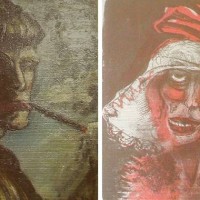 Amid criticism from groups representing Holocaust victims and their heirs and growing international pressure to disclose more information about the cache of art found in the apartment of Cornelius Gurlitt, Germany has announced that it will speed provenance research of the artworks, as well as begin to publish online details about the works.
Amid criticism from groups representing Holocaust victims and their heirs and growing international pressure to disclose more information about the cache of art found in the apartment of Cornelius Gurlitt, Germany has announced that it will speed provenance research of the artworks, as well as begin to publish online details about the works.
-
Trove of Nazi-looted Art Discovered in Munich Apartment, But Questions Remain
11/05/2013
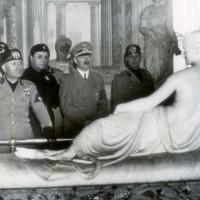 In September 2010, aboard a train from Switzerland, German customs agents were carrying out a routine check when they approached Cornelius Gurlitt. The man, who seemed nervous, was in possession of 9,000 euros and was not registered with the police—which is mandatory in Germany. Officials issued a search warrant for his Munich apartment, expecting to find undeclared euros or evidence of questionable bank accounts.
In September 2010, aboard a train from Switzerland, German customs agents were carrying out a routine check when they approached Cornelius Gurlitt. The man, who seemed nervous, was in possession of 9,000 euros and was not registered with the police—which is mandatory in Germany. Officials issued a search warrant for his Munich apartment, expecting to find undeclared euros or evidence of questionable bank accounts.
-
Dealers' Heirs Seek Restitution of Bode Museum's Guelph Treasure
10/15/2013
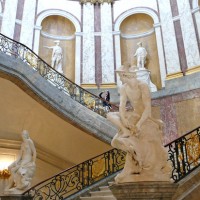 At the center of one of Germany’s largest restitution claims is the Berlin portion of the Guelph Treasure, a trove of ecclesiastical art, largely comprised of gem-encrusted reliquaries and crosses, dating from the 11th through 15th centuries. The hoard of precious objects was originally housed in the Braunschweig cathedral, and in 1671 it passed into the hands of the princely House of Guelph.
At the center of one of Germany’s largest restitution claims is the Berlin portion of the Guelph Treasure, a trove of ecclesiastical art, largely comprised of gem-encrusted reliquaries and crosses, dating from the 11th through 15th centuries. The hoard of precious objects was originally housed in the Braunschweig cathedral, and in 1671 it passed into the hands of the princely House of Guelph.
-
Israel Museum Restitutes Important Nazi-Looted Liebermann Landscape
06/10/2013
 In 1941, Max Liebermann’s landscape masterpiece, Garden in Wansee (1923) was seized by the Einsatzstab Reichsleiter Rosenberg, a Nazi art-confiscation agency, from the collection of Jewish businessman, Max Cassirer. Recently, the Israel Museum in Jerusalem announced that it had restituted the painting to Cassirer’s heir. As per the settlement, the Museum returned the painting to the heir and then re-acquired it, allowing it to remain in the Museum’s collection, accessible to the public.
In 1941, Max Liebermann’s landscape masterpiece, Garden in Wansee (1923) was seized by the Einsatzstab Reichsleiter Rosenberg, a Nazi art-confiscation agency, from the collection of Jewish businessman, Max Cassirer. Recently, the Israel Museum in Jerusalem announced that it had restituted the painting to Cassirer’s heir. As per the settlement, the Museum returned the painting to the heir and then re-acquired it, allowing it to remain in the Museum’s collection, accessible to the public.
-
Citing Museums Greater Interest, Dutch Commission Rejects Heirs Claims To Nazi Looted Works
05/13/2013
 In 1933, Jewish industrialist Richard Semmel sold four paintings at auction under duress as a result of Nazi persecution. Now, the Dutch Restitutions Committee, which can give binding opinions in matters of disputed art, has rejected claims by Semmel’s heirs for three of the four paintings.
In 1933, Jewish industrialist Richard Semmel sold four paintings at auction under duress as a result of Nazi persecution. Now, the Dutch Restitutions Committee, which can give binding opinions in matters of disputed art, has rejected claims by Semmel’s heirs for three of the four paintings.
-
D.C. Circuit Revives Claims Seeking Return Of Nazi-Seized Art
04/23/2013
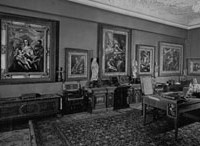 The D.C. Circuit ruled recently that the heirs of a legendary Hungarian art collector could proceed with their claims against Hungary to recover eleven works seized by the Nazis notwithstanding a Hungarian court ruling to the contrary. See De Csepel v. Republic of Hung., 2013 U.S. App. LEXIS 7837 (D.C. Cir. April 19, 2013). This decision highlights the many legal issues—and obstacles—involved in cases seeking the return of art stolen during World War II.
The D.C. Circuit ruled recently that the heirs of a legendary Hungarian art collector could proceed with their claims against Hungary to recover eleven works seized by the Nazis notwithstanding a Hungarian court ruling to the contrary. See De Csepel v. Republic of Hung., 2013 U.S. App. LEXIS 7837 (D.C. Cir. April 19, 2013). This decision highlights the many legal issues—and obstacles—involved in cases seeking the return of art stolen during World War II.
Art Law Blog
